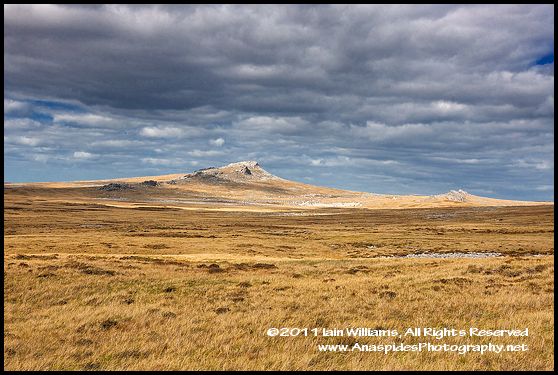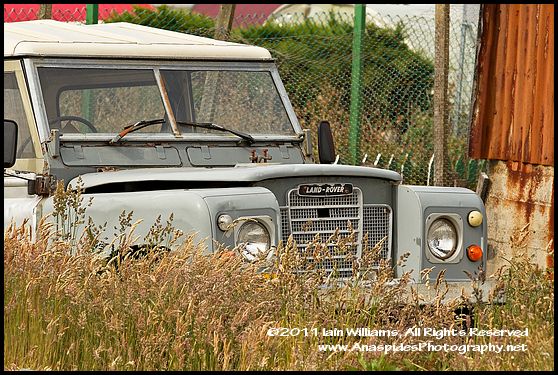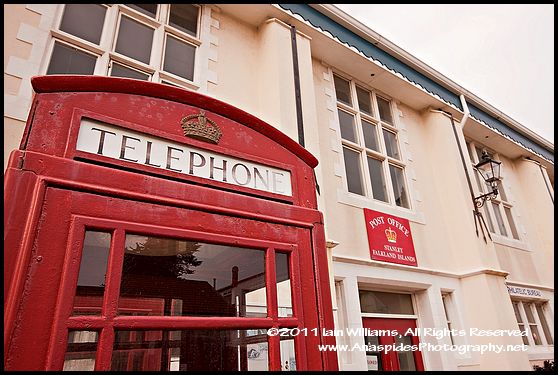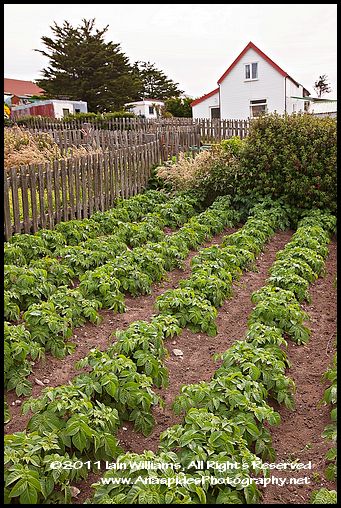Falkland Islands, South Atlantic - 1st Post
 Friday, February 18, 2011 at 3:04PM
Friday, February 18, 2011 at 3:04PM  In late December and for most of January I was located in the Falkland Islands, a small archipelago of islands located off the southern most tip of Argentina in the South Atlantic ocean. The Falkland Islands are renowned as a pristine environment of subtle beauty that is home to a wealth of fascinating wildlife. My main reason for visiting these remote islands was to photograph the Black-browed Albatross and the Southern Elephant Seal – both species breed and haul out on several of the islands.
In late December and for most of January I was located in the Falkland Islands, a small archipelago of islands located off the southern most tip of Argentina in the South Atlantic ocean. The Falkland Islands are renowned as a pristine environment of subtle beauty that is home to a wealth of fascinating wildlife. My main reason for visiting these remote islands was to photograph the Black-browed Albatross and the Southern Elephant Seal – both species breed and haul out on several of the islands.
LEFT: Different coloured Landrovers parked in side street of Stanley attest to this vehicle's popularity in the Falklands. To be honest, this is the first time I have seen a purple coloured landrover!
 Geology, Geomorphology and Palaeogeography
Geology, Geomorphology and Palaeogeography
The Falklands has an interesting geological history, with the oldest Granitic and Gneiss basement rocks forming during the Precambrian Period about 1000 million years ago. Above these rocks lie the quartzites of the Port Stevens Formation. These highly deformed metamorphic rocks, originally deposited about 420 million years ago during the Silurian Period, outcrop as the sea cliffs around Cape Meredith, the southernmost point of West Falkland.
LEFT: The eroded remains of a mountain range formed during the initial breakup of Gondwana.
Palaeogeographical data indicates that the Falkland Islands were located adjacent to South Africa during the Lower Permian Period approximately 300 million years ago. It was at this time that the major continental land masses that we know of today were joined together in a giant super continent named Gondwanaland. During the Jurassic Period, around 200 million years ago, tectonic forces caused the large super continent of Gondwana to break up, and the continental plate on which the Falklands rested, slowly began to move westwards to reposition itself adjacent to the geologically different Argentina. To see a map showing the Falkland Islands geology click here.
At the beginning of the continental break up, major changes occurred at the margin of Gondwana when tectonic forces squeezed rock formations together causing intense folding, thrust faulting before forming a mountain range which is now seen as a thin spine migrating its way through the centre of the islands (see image above). Later, the underlying rocks that carried the neophyte Falklands were intruded by several volcanic dykes, further aided in the separation process of an already fragmented continent.
 The Ice Age & Sea Level Rise
The Ice Age & Sea Level Rise
The present day scenery of the Falklands owes its origin in many cases to the effects of the last Ice Age. Low lying hills supported small glaciers which carved their way downwards towards the sea. In the wake of these glaciers are cirque lakes, rock crags, moraines and boulder streams - often called rock runs. During this time, areas not covered by ice were permafrost. Eventually the climate warmed, and at the end of the ice age sea levels rose. It’s because of this sea level rise that much of the island’s coastline in indented with bays and coves. As the sea rose, it flooded low lying areas and river valleys producing meandering creeks and inlets that characterise many parts of the islands.
ABOVE: Boulder or rock streams called rock runs in the Falklands are caused by glacial and periglacial activity. The rocks are moved by the continual thaw and freeze action of ice.
With the increase in ambient temperature came a change to the island’s vegetation. Permafrost melted and was replaced with peat bogs some 3-4 meters in depth. Because of the continual buffeting of gale force winds, the land’s surface is mostly treeless with the tallest tress being almost prone scrubs that closely resemble Japanese ornamental bonsais. Much of the land is covered in a variety of grasses of which tussock grass is the most obvious to the untrained eye.
 Geopolitics and Colonisation
Geopolitics and Colonisation
The islands were initially occupied by the Spanish and French before being colonised by the British in the 1700’s. The British used the islands as a base for whaling, sealing, and beef production and as a harbour for seafaring activities in South Georgia (more whaling & sealing). A company was established called the Falklands Island Company (FIC) and it was through this company that many of the islands were initially inhabited. Later, the company downsized due to economic constraints and many of the islands formally owned by the FIC were sold to individuals to do as they please. Often the new owners took up pastoral activities and began to live a rural and frugal lifestyle. Interestingly. Although the Falklands is closer to Argentina than Britain it’s not a colony, but rather a self governing territory; all administration is in-house with defence and international policy being provided by the UK. ABOVE: The islanders are very proud of the heritage and often Union jacks and Falkland Island flags are flown or motifs painted on vehicles and houses.
 The War
The War
Politically the region sparked in 1982, when the Argentinean Government decided to invade the Falkland islands under the premise that the islands, because of their proximity, belonged to Argentina. This was despite Argentina not having any past habitation of the islands. The invasion began a 3 month war in which the invaders were repelled from the islands by the military forces of the United Kingdom. Despite the passage of time, both adversaries hold little love for each other and minor non aggressive skirmishes occur on a regular basis. The United Kingdom treat the situation seriously and have deployed Royal Airforce and Royal Navy units to the Falklands to provide continued military protection. It’s not uncommon to be peacefully photographing wildlife on a secluded and remote headland to hear the load roar of two RAF Euro Fighters as they fly overhead on a routine patrol.
ABOVE: Not used and not dumped - an old Series 1 Landrover dating from the 1960's is left abandoned beside a shed in Stanley. It's interesting to notethe chnage of colours that British Landrover used. Dull greys, yellows and greens in the 60's that simulate the military heritage of this vehicle type, to bright colours in the late 90's such as purple, red, and racing car green; colours that appeal more to the "yuppy" generation.
Although I flew on a civilian airliner (LAN), ingress to the islands is via the RAF airbase located near the town of Stanley. The first thing any visitor observes when leaving the aircraft is a number of heavily armed RAF military police with large dogs on leaches. Signage indicates that military personnel are to be vigilant at all times and this is reinforced when travelling through the airbase after immigration control – armed soldiers are easily seen and it becomes obvious that the UK Military treat the Falklands is a forward base rather than a rest camp.
 Islands in Time
Islands in Time
Visiting the islands was very much like climbing out of a tardus time capsule; the present seems far away. Everything looks and feels late 1950’s England. Perhaps it’s the incredible number and diversity of old Landrovers that ply the unsealed roads, the old sheds that litter nearly every backyard in Stanley, the “Doctor Who” red telephone boxes, or the fact that modern fashion has not seemed to have taken hold in this sleepy backwater of the UK. One local proudly informed me that if the shop has my size, I buy it – colour and style have little to do with the purchase equation.
If you were searching for words that describe life in the Falklands, it would be eclectic and functional. Aesthetics has very little to do with how you do something; case in point being the green roof with pink second hand guttering – hey it works!
 Recycling, History and Gardens
Recycling, History and Gardens
What we classify as “junk” a local classifies as “something that may be of use – someday! Everything is kept and often stored in a shed that takes pride and place along with a small local garden. The small gardens remind me of “Victory Gardens” a term coined during the Second World War when Brits had to fend for themselves because of the Blitz. It’s unfortunate that this concept of recycling is out of vogue in many western countries whose occupants have a buy and throw away mentality.
Stanley is located along one side of an inlet in which on the opposite shore, outlined in large boulders are the names of many ships that have plied these waters. One ship, the “Beagle” hints at a time when Charles Darwin visited the island to study it’s natural history.
Another aspect difficult not to notice, at least in Stanley, is the Falkland Islanders choice of paint colour. Bright colours such as red, green, yellow and blue have been used paint the trim of some houses and sheds in an attempt to offset the otherwise bland colour of white wash. On the roof of one house has been painted a large colourful union jack. I learnt that the local council didn’t approve of the design as it didn’t reflect the town’s style, however, the strongly nationalistic islander was not persuaded and the motif remains.
The Falklands is sparsely populated with roughly 2500 islanders, many of which inhabit the capital Stanley. It’s because of this spare population and lack of large scale development that many of the surrounding islands are rich in wildlife.
In my next post I will discuss some of the animals that call the Falkland’s home and include some wildlife photographs.


